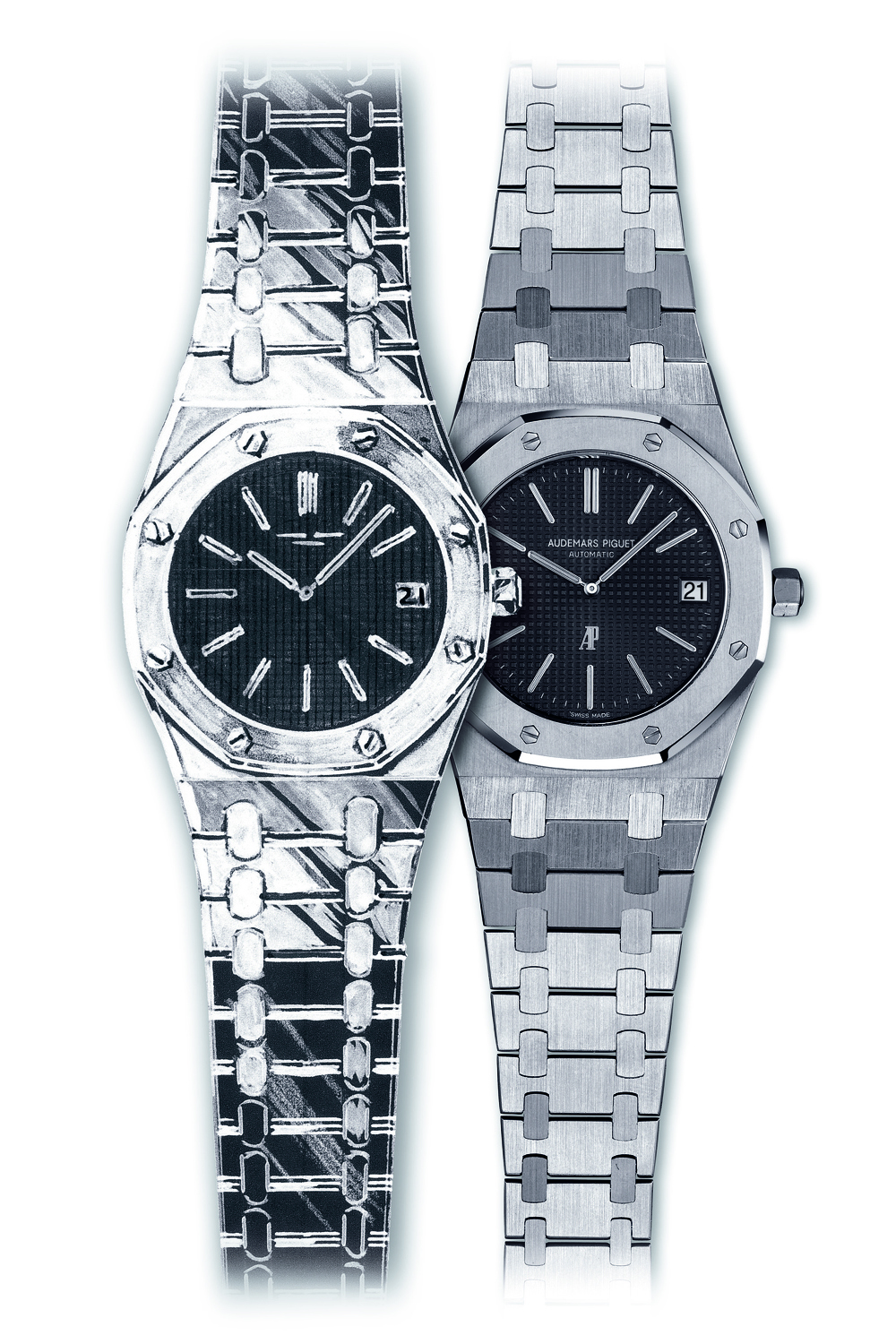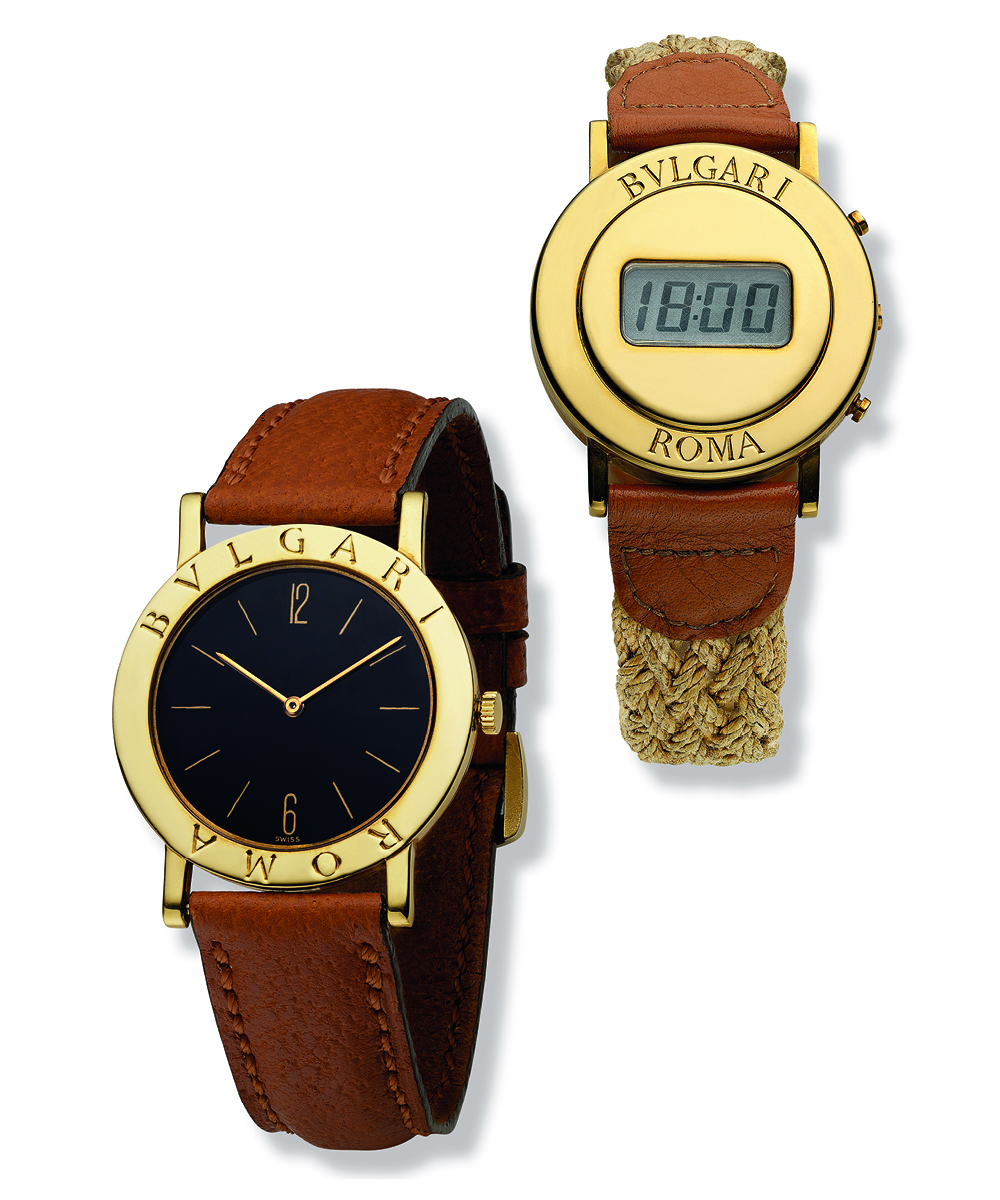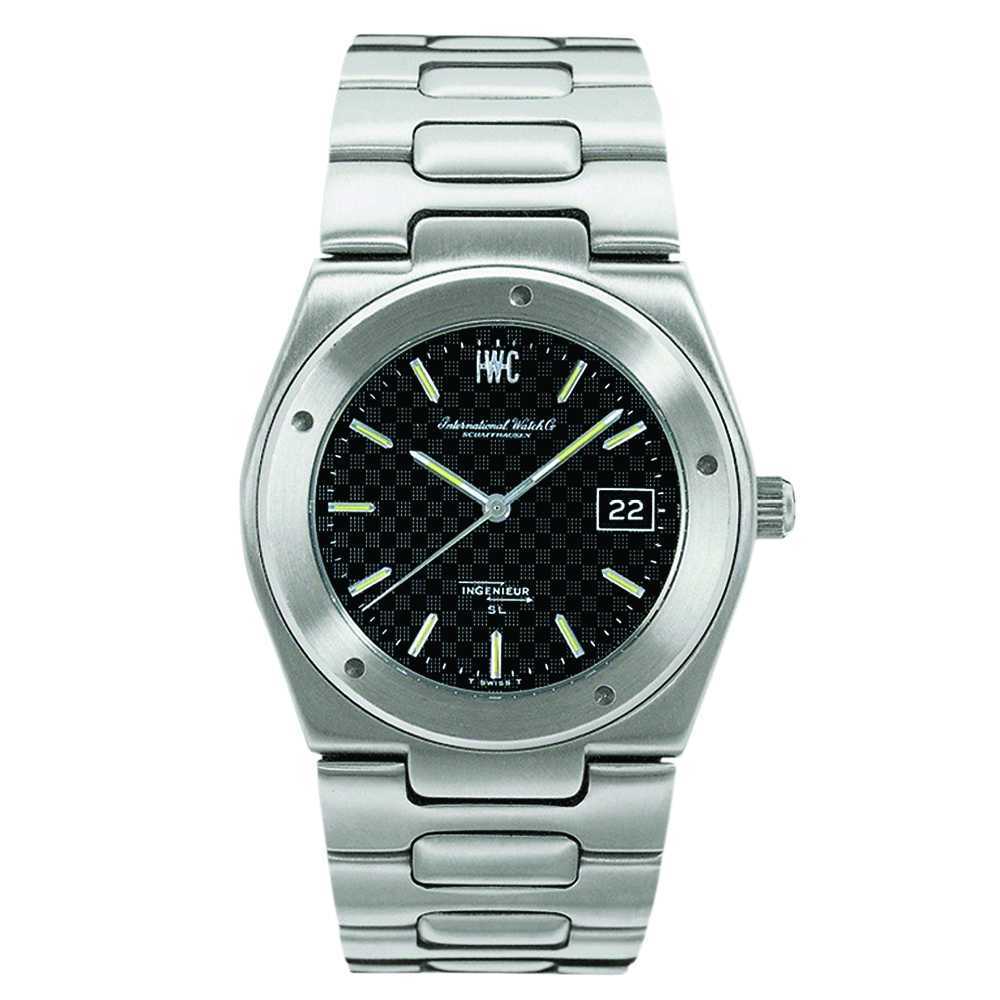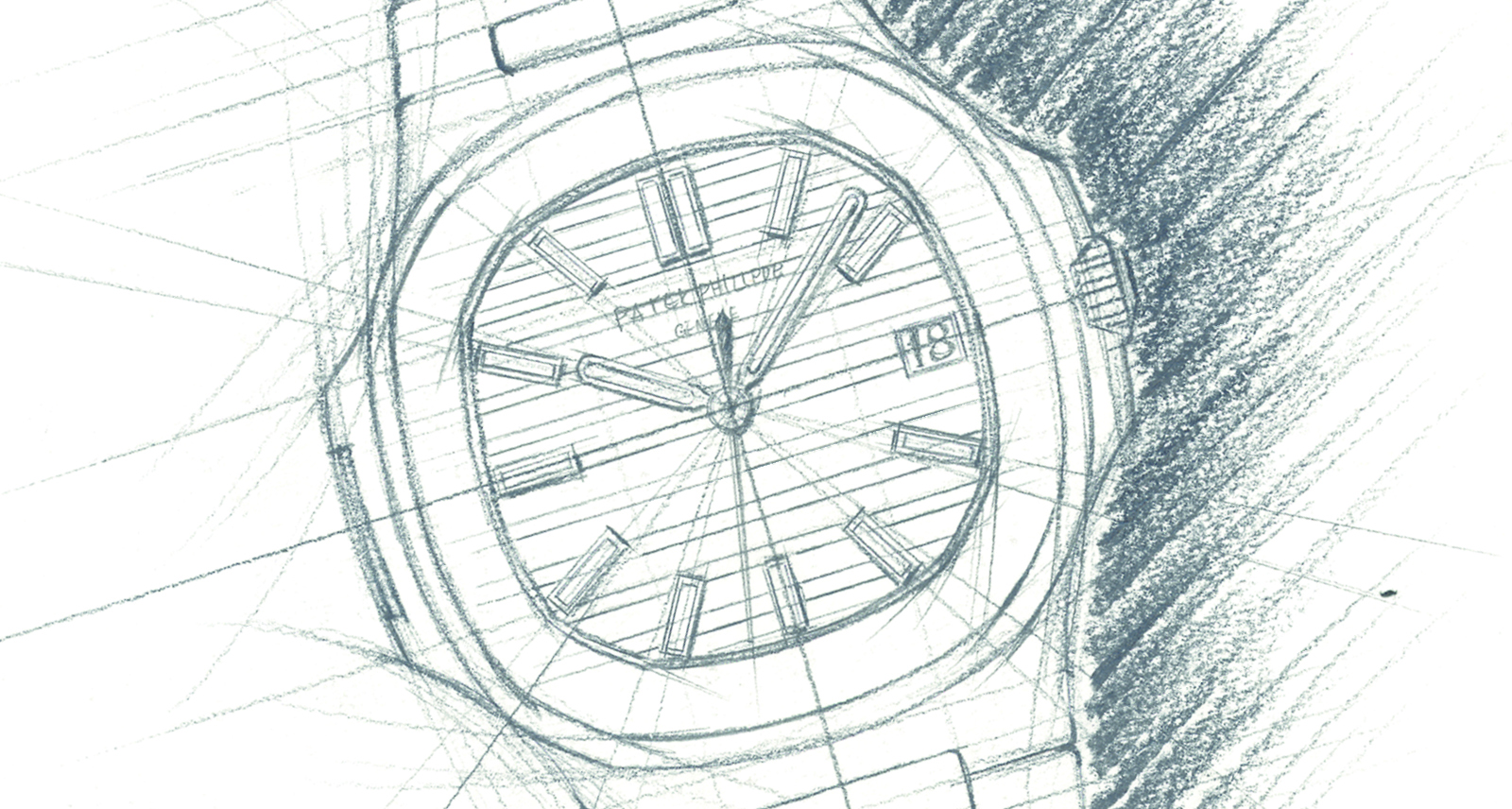Meet the Bob Dylan of the Watchmaking World
Occasionally, a moment occurs in culture that marks a shift. It is Neil Armstrong’s voice crackling out over space, it’s Bob Dylan plugging in his Stratocaster at Newport, it’s Steve Jobs holding aloft the first iPod. Armstrong didn’t engineer the space shuttle, just as Jobs didn’t invent the MP3 player, nor was Bob Dylan the first guy to play rock and roll, but through some combination of timing, creative brilliance, and marketing savvy, they managed to change the world all the same. They deserved the credit. It’s about time Gerald Genta received his credit, too.
Genta, who died at the age of 80 in 2011, was the watch world’s first true celebrity designer. By his own estimation Genta created 100,000 watch designs in a career spanning more than six decades, from a digital Timex that sold millions of units to a spectacular limited edition tourbillon. “I don’t think many people even realize he is the reason they like what they like,” says Rod Cleaver, proprietor of the vintage watch shop Yorktime.com, whose love of watches began with a Genta-designed Omega Constellation worn by his father. Genta’s body of work is unparalleled, both in scale and quality, but that only explains his success as much as Bob Dylan’s catalogue explains the singer’s. To understand Gerald Genta’s phenomenal influence is to understand his central role in a single cultural moment that changed the watch industry.

Genta’s moment didn’t come in front of an audience. It wasn’t broadcast on national television. His moment called him. One afternoon in 1970, Gerald Genta received a phone call. “Mr. Genta, I need a steel sports watch that has never been done before,” Genta recounted to watch writer Constantin Stikas in one of his final interviews. “I want it to be something totally new and waterproof. I want the design by tomorrow morning.” The call was from Georges Golay, managing director of Audemars Piguet, an independent Swiss watchmaker about to celebrate its 100th birthday. Until then Audemars Piguet had been known for thin, handmade timepieces with high-tech complications like perpetual calendars, mostly crafted from precious metals and decidedly conservative in their design. This dramatic change of direction for the brand was brought about by necessity. The so-called “quartz crisis” was looming, and as cheap, reliable quartz movements from Japan began to flood the watch market, sales of Swiss watches were taking heavy casualties. “What was happening was the fear that quartz was destroying the Swiss watch industry,” says Evelyne Genta, Gerald’s widow and de-facto archivist. The luxury world, too, was changing, with a new generation of men shunning the stiff manners and suit-wearing ways of their fathers in favour of open collars, sportswear and swinging hedonism. Cary Grant was out, Burt Reynolds was in, and there was no going back. “It was no longer about having the watch you wear with the suit and the watch you wear with the jeans,” says Michael Friedman, the in-house historian at Audemars Piguet. “It was about a lifestyle.”
The Swiss realized they must adapt or be cast aside, and Genta would be the guy to help them do it.

The iconic Audemars Piguet Royal Oak, in sketch and reality.
Gerald Genta was born in Geneva in 1931. A creative kid with artistic ambitions, he apprenticed as a jeweller at the age of 15 and quickly discovered a love of watch design. At that time watchmakers would source schematics for cases, dials, bracelets, and whatever else they needed ad hoc from anonymous freelance designers, and Genta happily stepped into this role, selling his sketches for as little as 15 Swiss francs a pop to international brands like Omega, Hamilton, and Rolex. As Genta’s profile grew, so did the stature of his commissions. In 1954, the Scandinavian airline SAS launched a new route from Copenhagen to Los Angeles, ambitiously shaving hours off the flight time by charting a course over the North Pole. Tasked with designing an official flight watch whose movement would counter the magnetic disruption of the polar north, watchmaker Universal Geneve sought Genta’s help. The resulting timepiece would represent both the height of modern technology and the promise of the coming jet age. Genta’s design, the “Polarouter,” sparsely adorned with triangular “dauphine” hands and simple hour indices, its inner face recessed to create a subtle three-dimensional effect, is a shining example of streamlined midcentury futurism. It’s also the first pure representation of the design philosophy that would become synonymous with Gerald Genta’s name: unapologetically forward-looking, while unmistakably rooted in classical design.
Following the phone call from Audemars Piguet, so the story goes, Genta worked all night on the design for the new steel watch. Until that time, luxury watches had been mostly made of gold, and sport watches of steel — the idea of the luxury steel sports watch was novel in itself. For a steel watch to justify the name of a luxury brand, let alone the price, it would have to be truly spectacular — a work of art worthy of the fine Swiss movement within. It would also need to appeal to the new generation of fashion-conscious watch buyers. Genta nailed it. An eight-sided case secured by eight visible hexagonal nuts, with strong angular lugs flowing seamlessly into a bracelet of flat, descending links, it was unlike anything that had come before. This would become the Audemars Piguet Royal Oak, Genta’s most famous achievement, and among the world’s most iconic watches.

The new Bulgari Roma and the original 1975 version.
“It’s an object that blurs the line between art, design, and horology,” says Friedman. “It’s taking something that’s inherently not precious and not valuable and turning it into something immensely valuable.” Genta’s design wore its engineering on its sleeve, elevating its base material through the careful selection of lines, forms, and textures. What Andy Warhol’s soup cans were to modern art, Genta’s creation was to the world of jewellery. “When we say it created a new category,” Friedman says, “we’re really understating what that represents.” In 1972, the stalwart Rolex Submariner, already among the world’s foremost steel watches, was priced at about $350. The Royal Oak’s sticker price was $3,500. The future had arrived, and it had Genta’s name all over it.
If this were a movie about Gerald Genta’s life, the release of the Royal Oak would kick off the Boogie Nightsstyle montage sequence of his heyday (just replace the porn sets with Swiss boardrooms), complete with the Ferraris he drove and expensive suits he favoured. Throughout the rest of the 1970s Genta cemented his reputation as the go-to designer for modern timepieces, penning hit after hit for the world’s top brands. In 1974, there was Patek Philippe’s Nautilus, which Genta claims to have sketched in five minutes at a Geneva restaurant table. The brand’s first foray into sport watches, it is defined by a unique rounded case reminiscent of a diver’s helmet and remains a cornerstone of their collection today. 1975 saw the launch of the BVLGARI BVLGARI, a flagship timepiece for the Italian brand with its name etched boldly on the face in the style of a Roman coin. In 1976, Genta designed IWC’s Ingenieur SL. A luxury steel sports watch with integrated lugs, visible case screws and a spare, streamlined design, Genta’s aesthetic was immediately recognizable. “He was the right man at the right moment,” says Max Busser, founder of MB&F and designer of some of the world’s most avant-garde luxury timepieces. “His ’70s designs were exactly on the pulse. What gave them longevity is that they were not as exuberant as many others of that period. He always kept an element of elegance in a decade that was pretty wild.” Informed by classical watchmaking as much as the work of Picasso and the natural world, he brought to his creations a rare combination of irreverence, artistic refinement, and industrial functionality.

The IWC Ingenieur
Genta maintained an active career through the end of the 20th century, designing watches under his namesake Gerald Genta brand and creating thousands of custom pieces for some of the world’s most discriminating buyers. Free of the strictures of the corporate world, his output remained prolific, his creations noteworthy for their artistry. His 1994 Grande Sonnerie Retro was at its time the most complicated watch ever made. While Genta would not produce another hit on par with his 1970s work, his contributions to the canon of watchmaking stand out ever more sharply with each passing year. Today the watch industry is almost unrecognizable from what it was in Genta’s heyday, and the creative freedom he had is unimaginable. The Swiss are back on top, producing the best, most sought after watches in the world. Genta’s creations weren’t solely responsible for making mechanical watches cool again, but it’s undeniable that he arrived at the precise moment he was needed. When the world is ready to be changed, one man can do it with a song, or a sentence, or a simple drawing.










